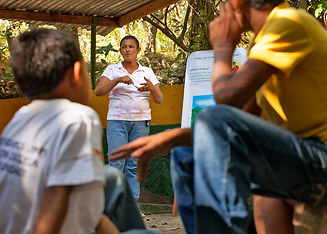FINANCIALS
We are grateful to all of our donors! We are a transparent organization and will provide more detailed financial information upon request. We are an efficient nonprofit; 82 cents of every dollar you give goes directly to our program work in Nicaragua.
FINANCIALS
We are grateful to all of our donors! We are a transparent organization and will provide more detailed financial information upon request. We are an efficient nonprofit; 82 cents of every dollar you give goes directly to our program work in Nicaragua.
PROGRAMS
IMPACT
-
Improve water quality and quantity
-
Improve the quality of life
-
Improve public health
-
Improve educational opportunities
-
Improve economy
-
Protect the aquifers the water projects draw from
-
Restore stream flow and critical habitat
-
Increase food and water security
-
Improve environmental management
-
Sustainably use existing resources
-
Improve health with improved stoves that vent hazardous smoke
-
Educate about the connection between WASH and watersheds
-
Train Potable Water and Sanitation Committees to build, own, operate, and maintain their projects


WATER
Where we work, community members obtain their drinking water from shallow, unlined, and uncovered hand-dug wells or open springs that are often far from their homes.
We work with community members who ask for our support on the following types of water projects: hand-dug wells, drilled wells, gravity flow water systems, spring capture systems, electric pump water systems, water filters, and water quality testing.
SANITATION
Only 45% of Nicaraguans have safe sanitation facilities. We work with rural Nicaraguans to build home, school, and health post double pit latrines or post pour flush toilets as well as school hand washing stations.
-
Latrines and toilets: This system is sustainable as users cycle through the two ventilated pits. By the time one is full, the second one is safe to empty out. In areas with enough water access, we also partner with communities to build pour flush latrines with basic septic.
-
School hand washing stations: Children who attend schools with latrines and hand washing stations are 20-30% less likely to miss school than children who attend schools without these amenities (CARE). School hand washing stations are situated between classrooms and the latrines so students remember the importance of washing their hands. Stations have running water and soap.



WATERSHED RESTORATION
-
Micro-watershed restoration: Community members plant tree nurseries and then strategically transplant the seedlings to places where the trees will grow. Our reforestation workers follow up to ensure survival of the seedlings, teaching community members how to collect and store seeds for next year's nursery planting.
-
Watershed restoration: Community members learn about agroforestry, intentionally integrating trees with crops to create a sustainable land-use system. By doing this, they rejuvenate damaged cropland and pastureland while restoring stream flow, increasing rainwater absorption, recharging groundwater sources, and reducing soil erosion.
-
Fuel-efficient, vented stoves: Indoor air pollution by traditional, smoky, wood-burning stoves is as detrimental to health as smoking 2 packs of cigarettes a day (WHO). Fuel-efficient, vented stoves use 60% less firewood and vent out the indoor smoke.
HEALTH EDUCATION
This is the key to our success; through this program, community members learn how to reduce water and sanitation-related illness through good hygiene practices. Our Health Educators teach communities how to maintain their projects through community workshops and household visits. They also train locally elected Potable Water and Sanitation Committees (CAPS). CAPS are responsible for organizing ongoing project use, care, and maintenance.


IMPACT THROUGH EVIDENCE
We are a learning organization and believe in evidence-based work, so we carry out periodic evaluations as one part of our monitoring and evaluation program. We use the results to let us know what's working and where we need to adapt responses. We also believe in transparency, so below are evaluations carried out by third parties. COVID has made it challenging to have third-party evaluations, but we hope to have more recent evaluations in the coming year.
